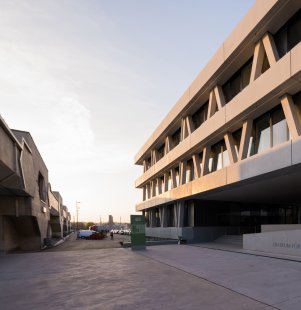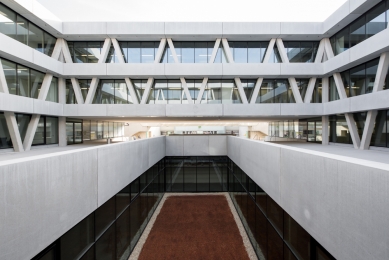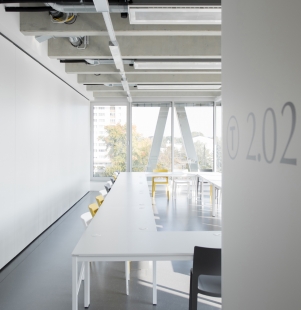
Center for Technology and Design

 |
Aside from creating a contemporary working atmosphere, the focus here above all is on a high degree of interdisciplinarity.
Accordingly, the architectural concept is centered on the communication between different types of users.
A common lobby connects all floors and public areas such as the auditorium, break and presentation areas.
The lobby opens to an inner courtyard which unfolds a large plaza between the new building and the existing WIFI main building. It functions as a central meeting area that facilitates interesting opportunities of exchange.
Other meeting areas inside the building also promote exchange and informal learning. Great emphasis was placed on an engaging mix of workshops, spaces of study and seminar rooms so that theory and practice may spontaneously mingle.
The second defining aspect of the project is to make form and function visible from inside and outside the building. The competition jury statement says that “the proposal promises a technological dress in design perfection.”
The special character of the tede-Z is defined by distinctive V-shaped columns.
Fully exposing the construction and MEP facilities and doing without any cladding or opaque building skin not only suggests clarity and transparency, but also provides a literal object lesson for the prospective technicians and designers that will be working here.
Reduction to essentials—this principle also informed the choice of materials employed. A thermal skin of glass provides for maximum transparency, while concrete as the primary structural construction material responds to the neighboring WIFI main building, a heritage-protected exposed-concrete construction by Karl Schwanzer.
The new building unmistakably communicates its purpose to the outside, while creating an adequate setting for ideas and projects that trainees and students will be realizing here in interdisciplinary collaboration in the future.
0 comments
add comment


































